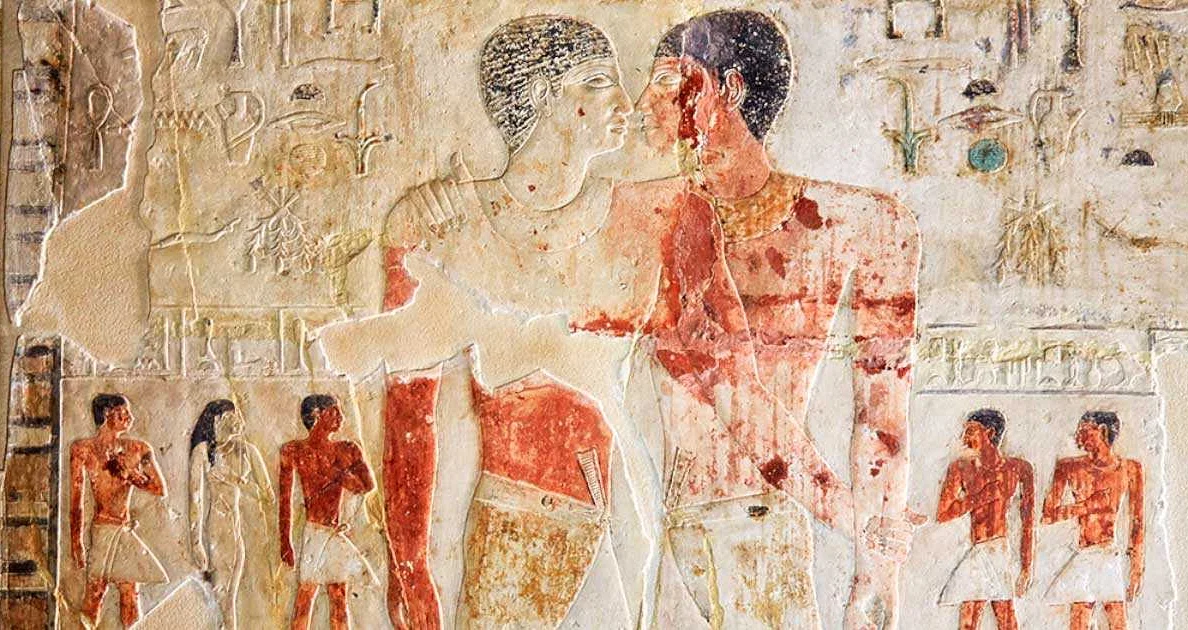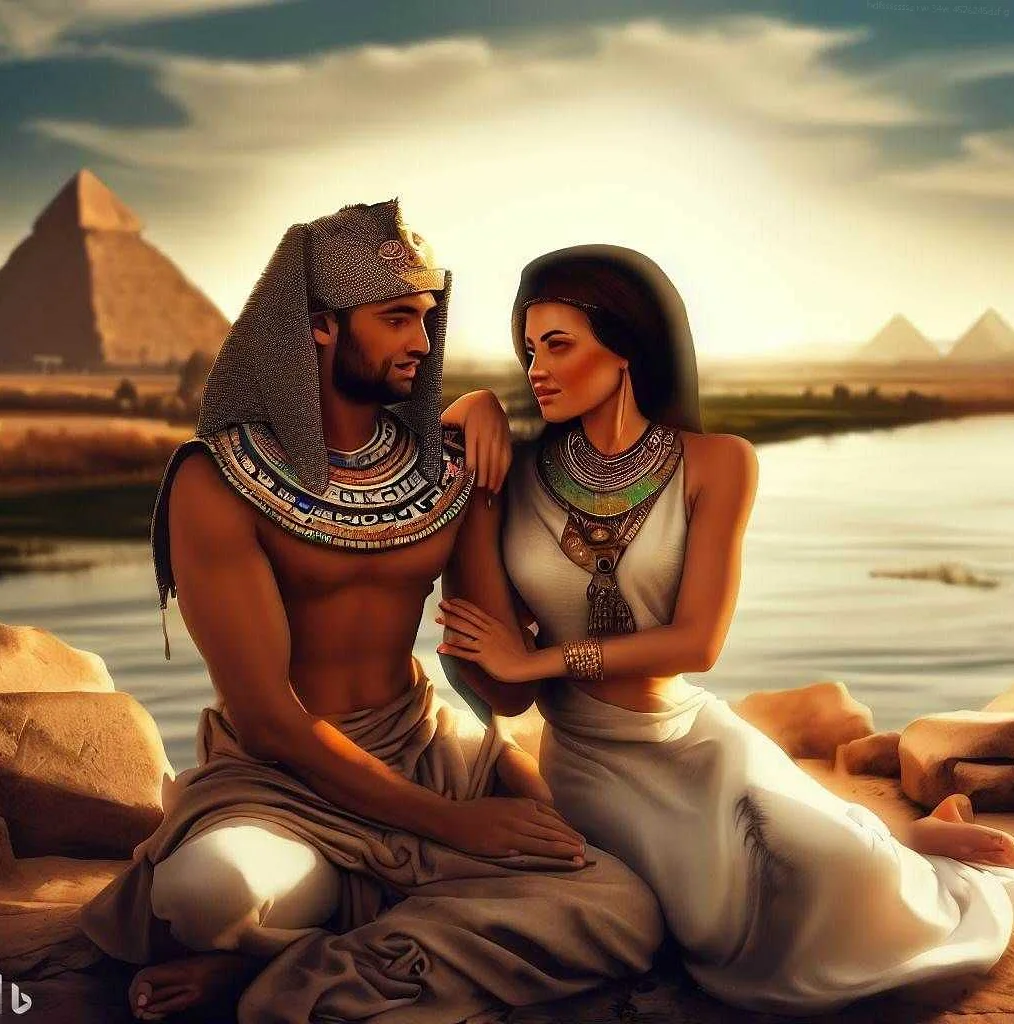Intimate Life in Ancient Times: Exploring the Ways People Had Sex
Содержимое
Discover the intriguing secrets of ancient sexuality and intimate practices. Delve into the customs, beliefs, and techniques of how people engaged in sexual activities in ancient times. Explore the fascinating aspects of ancient intimate life and gain a deeper understanding of our ancestors’ sexual practices.
The exploration of sexual practices in ancient times has long intrigued historians and archeologists alike. While much of ancient history is focused on politics, wars, and societal structures, it is important to delve into the intimate life of the past to gain a comprehensive understanding of human culture and relationships. By examining ancient texts, artwork, and artifacts, we can begin to piece together a vivid picture of how our ancestors expressed their sexuality.
Ancient civilizations had their own unique approaches to sex, which often differed greatly from modern norms. The Egyptians, for example, celebrated sexuality and saw it as a vital part of their religious beliefs. Their artwork often depicted sexual acts, and they believed that the fertility of the gods was echoed in human sexual activity. The Greeks, on the other hand, had a more complex understanding of sexuality, with separate terms for different types of love, such as eros (romantic love) and philia (platonic love).
Sexual practices in ancient times were not limited to heterosexual relationships. In many societies, same-sex relationships were accepted and even celebrated. The Romans, for instance, were known for their acceptance of homosexuality, and many of their emperors and influential figures engaged in same-sex relationships. In ancient India, the Kama Sutra detailed a variety of sexual practices, including those between individuals of the same gender.
By exploring the sexual practices of ancient civilizations, we can gain insight into the diverse ways in which humans have expressed their sexuality throughout history. It is important to approach this topic with an open mind and to recognize that cultural attitudes towards sex have varied greatly over time. The study of sexual practices in ancient times allows us to challenge our own assumptions and gain a deeper appreciation for the complexity of human sexuality.
Ancient Sexual Practices: A Glimpse into the Past
The intimate lives of people in ancient times have long been a topic of fascination and intrigue. While much of what we know about ancient cultures is based on written texts and archaeological findings, there is still much that remains unknown. One area that has garnered particular interest is the sexual practices and beliefs of ancient civilizations.
Exploring the sexual practices of the past allows us to gain a deeper understanding of the cultural, social, and religious dynamics of ancient societies. It provides a glimpse into the attitudes and beliefs surrounding sex and relationships, shedding light on the complexities of human sexuality throughout history.
Ancient sexual practices varied greatly across different civilizations. In Ancient Egypt, for example, sexuality was closely intertwined with religious beliefs. The Egyptians believed that sexual pleasure was a gift from the gods, and they actively sought to incorporate it into various aspects of their lives, including religious rituals and fertility rites.
Ancient Greece, on the other hand, had a more open and liberal attitude towards sexuality. Homosexuality, for instance, was widely accepted and even celebrated among the ancient Greeks. It was not only seen as a physical act but also as a deep emotional bond between two individuals.
Some ancient cultures practiced forms of non-monogamy, such as polygamy or polyandry. In these societies, it was not uncommon for individuals to have multiple spouses or partners. These relationships were often based on social or economic considerations rather than romantic love.
While ancient sexual practices may seem unusual or even shocking to our modern sensibilities, it is important to remember that they were products of their time and cultural context. They were shaped by the beliefs, values, and social structures prevalent in ancient societies.
Studying ancient sexual practices allows us to challenge our own assumptions and biases about sexuality. It reminds us that human sexuality is diverse and multifaceted, and that our understanding of it is constantly evolving.
By delving into the intimate lives of people in the past, we gain a deeper appreciation for the complexity and richness of human sexual expression throughout history. It is a reminder that, despite the passage of time, the fundamental desires and needs that drive human sexuality have remained remarkably consistent.
As we continue to explore and uncover more about ancient sexual practices, we not only expand our knowledge of the past but also gain insights that can inform and shape our understanding of sexuality in the present.
Exploring Ancient Sexual Beliefs and Customs

In ancient times, sexual practices and beliefs varied widely across different cultures and civilizations. Understanding these ancient sexual customs can provide valuable insights into the social, religious, and cultural beliefs of the past.
One of the most well-known ancient civilizations with unique sexual beliefs was ancient Greece. In Greek society, there was a strong belief in the importance of male-male relationships. Homosexuality was not only accepted but also celebrated, especially in the context of pederasty, where mature men would mentor and engage in sexual relationships with young boys. This practice was seen as a way to pass down knowledge and wisdom.
In contrast, ancient Rome had a more conservative approach to sexuality. Roman society valued heterosexual relationships and marriage, as they were seen as a means of procreation and continuing the family line. Extramarital sexual relationships were frowned upon, although they were not uncommon among the upper classes.
Another fascinating example is ancient Egypt, where sexuality was intricately linked to religious beliefs. The Egyptians saw sex and reproduction as a divine act connected to the gods. As a result, they developed rituals and ceremonies that were performed to ensure fertility and the well-being of the community.
Ancient India also had unique sexual beliefs and practices. The Kama Sutra, a renowned ancient Indian text, explored various sexual positions and techniques, aiming to enhance pleasure and intimacy between partners. This text also emphasized the importance of consent, communication, and mutual satisfaction in sexual relationships.
Overall, the sexual beliefs and customs of ancient civilizations highlight the diversity of human sexuality across time and cultures. By studying these ancient practices, we can gain a deeper understanding of the complex interplay between sex, religion, culture, and societal norms in different historical periods.
| Greece | Celebration of male-male relationships, pederasty |
| Rome | Valued heterosexual relationships, marriage, frowned upon extramarital affairs |
| Egypt | Connection between sex and religion, fertility rituals and ceremonies |
| India | Kama Sutra, emphasis on pleasure, consent, and communication |
The Role of Sexuality in Ancient Societies

In ancient societies, sexuality played a significant role in various aspects of life. It was not simply a private matter but had social, religious, and political implications. The attitudes towards sexuality differed across different cultures and time periods, but it was an integral part of society nonetheless.
Sexuality in ancient societies was closely tied to reproduction and the continuation of the family line. The primary purpose of sexual intercourse was considered to be procreation, and having children was highly valued. In many cultures, having a large family was seen as a sign of prosperity and fertility. Consequently, the sexual practices of individuals were often regulated and controlled to ensure the successful reproduction of the community.
Religion also played a significant role in shaping the attitudes towards sexuality in ancient societies. Many cultures had deities associated with fertility and sexuality, and sexual rituals and practices were conducted as a form of religious worship. These rituals were often seen as a way to ensure the fertility of the land, crops, and livestock, as well as the success of the community as a whole.
Sexuality was also used as a means of social control and establishing hierarchies in ancient societies. The sexual behavior of individuals, especially women, was often regulated and controlled to maintain social order. Virginity, chastity, and faithfulness were highly valued virtues, particularly in women, as they ensured the legitimacy of offspring and the stability of the family unit.
However, it is important to note that not all segments of ancient societies had the same outlook on sexuality. Different social classes, genders, and age groups had varying levels of sexual freedom and restrictions. For example, the sexual practices of the ruling elite often differed significantly from those of the common people.
In conclusion, sexuality played a multifaceted role in ancient societies, encompassing aspects of reproduction, religion, and social control. The regulation and control of sexuality were integral to maintaining social order and ensuring the continuation of the community. Understanding the role of sexuality in ancient societies provides valuable insights into the cultural and social dynamics of the past.
Taboos and Forbidden Practices of Ancient Times
When exploring the sexual practices of ancient civilizations, it is important to recognize that many activities were seen as taboo or forbidden within these societies. These taboos often varied greatly from one culture to another, reflecting the unique values and beliefs of each civilization.
One common taboo in many ancient societies was incest. Engaging in sexual relationships with close relatives, such as siblings or parents, was viewed as immoral and prohibited. This prohibition was rooted in both moral and practical concerns, as incestuous relationships were believed to lead to negative consequences for the family and society as a whole.
Another forbidden practice in ancient times was homosexuality. While same-sex relationships were not universally condemned, they were often stigmatized and considered sinful in many cultures. For example, in ancient Greece, homosexual relationships between adult men and young boys were a common practice, but same-sex relationships between adults were generally frowned upon.
Prostitution was another taboo in many ancient civilizations. While there were instances of regulated and accepted forms of commercial sex work, such as in ancient Mesopotamia, the majority of societies viewed prostitution as morally wrong. In these cultures, engaging in sexual activities for financial gain was seen as degrading and shameful.
Furthermore, certain sexual practices were deemed forbidden due to religious beliefs and superstitions. For example, ancient Egyptian society placed great importance on purity and cleanliness, and engaging in certain sexual acts was considered impure and unacceptable. Similarly, in ancient Rome, certain sexual acts, such as oral sex, were considered taboo and were associated with shame and degradation.
| Incest | Various |
| Homosexuality | Various |
| Prostitution | Various |
| Religious beliefs and superstitions | Various |
Overall, the taboos and forbidden practices surrounding sexuality in ancient times varied greatly from culture to culture. These restrictions were often influenced by moral, practical, religious, and societal factors, reflecting the values and beliefs of each civilization. By examining these taboos, we gain insight into the complexity of ancient societies and how they understood and regulated sexual practices.